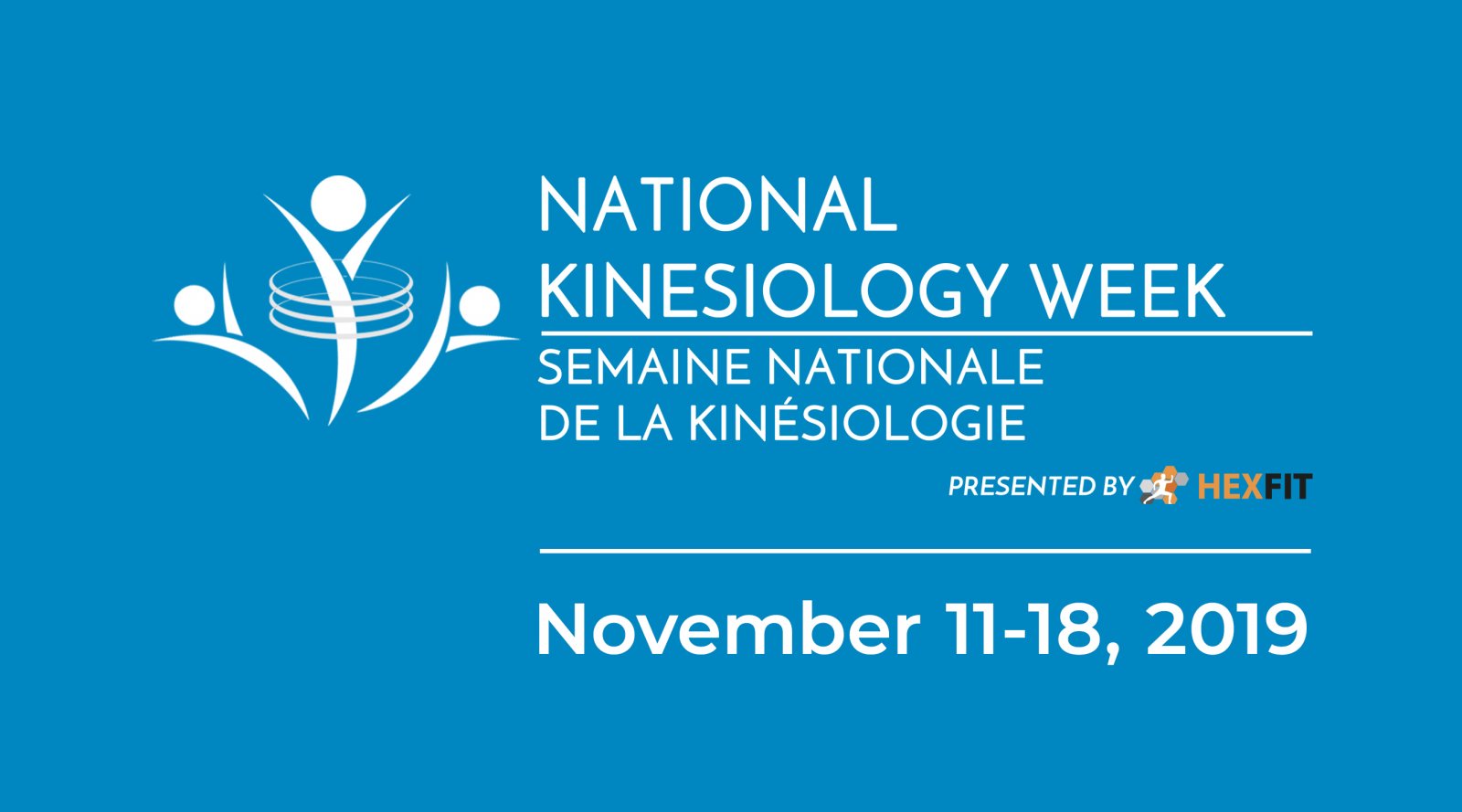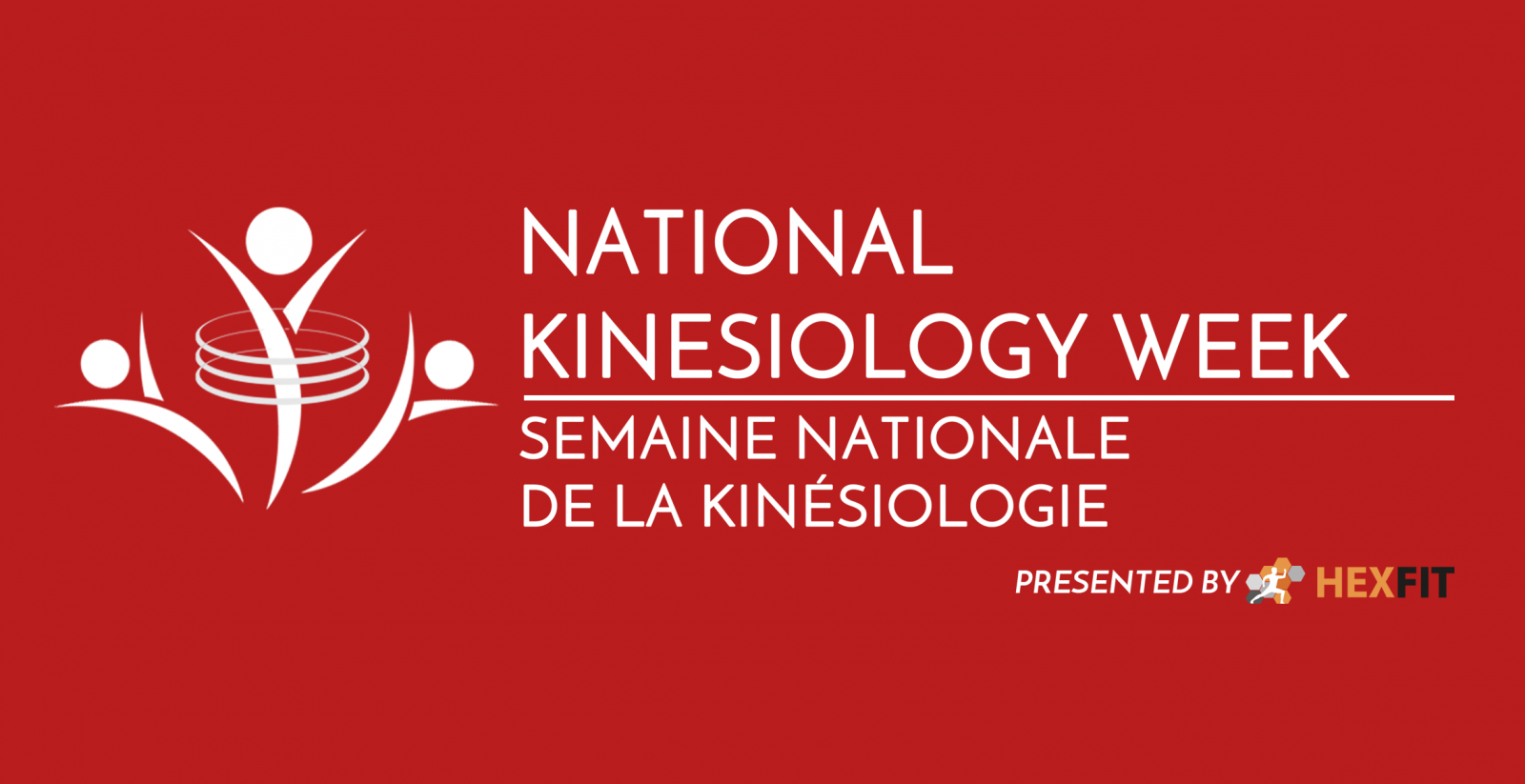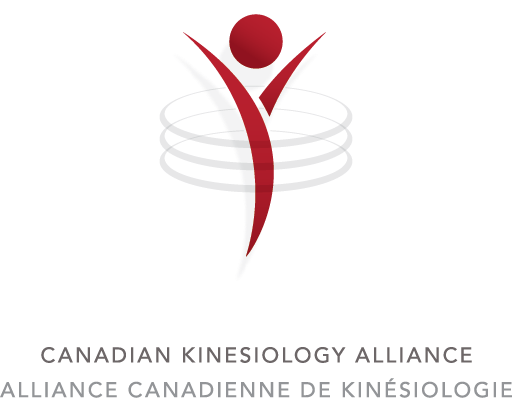What Resources and Materials Are Available to Kinesiologists?
In preparation for national events where the CKA invites Kinesiologists to get involved in their province and community to increase awareness of the profession, the CKA provides promotional resources, materials, and tools to Kinesiologists.
The CKA also provides, from time to time, documents and other materials to help Kinesiologists in the promotion and delivery of their services.
Please download and adapt the material at your convenience, provided you respect the CKA copyrights (Click on image or link).
EVENTS – Promotional Material
National Kinesiology Week
Supporting Mental Health Supporting Diabetes
Supporting Osteoporosis Supporting Active Lifestyles
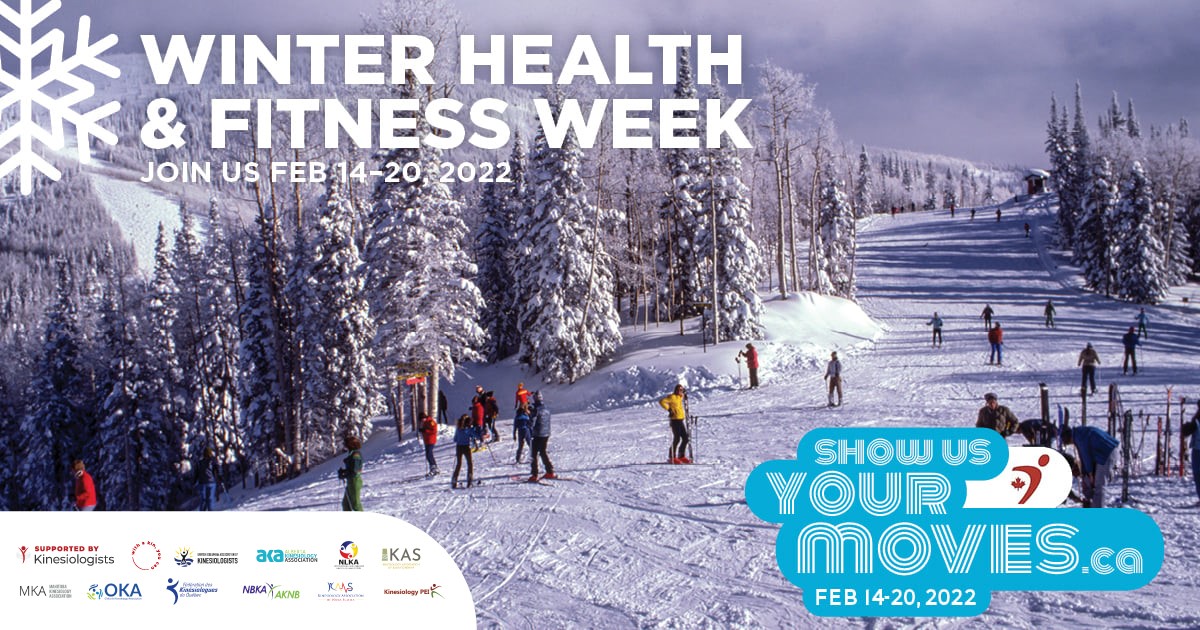 Winter Health & Fitness Week - Feb 14-20 2022
Winter Health & Fitness Week - Feb 14-20 2022
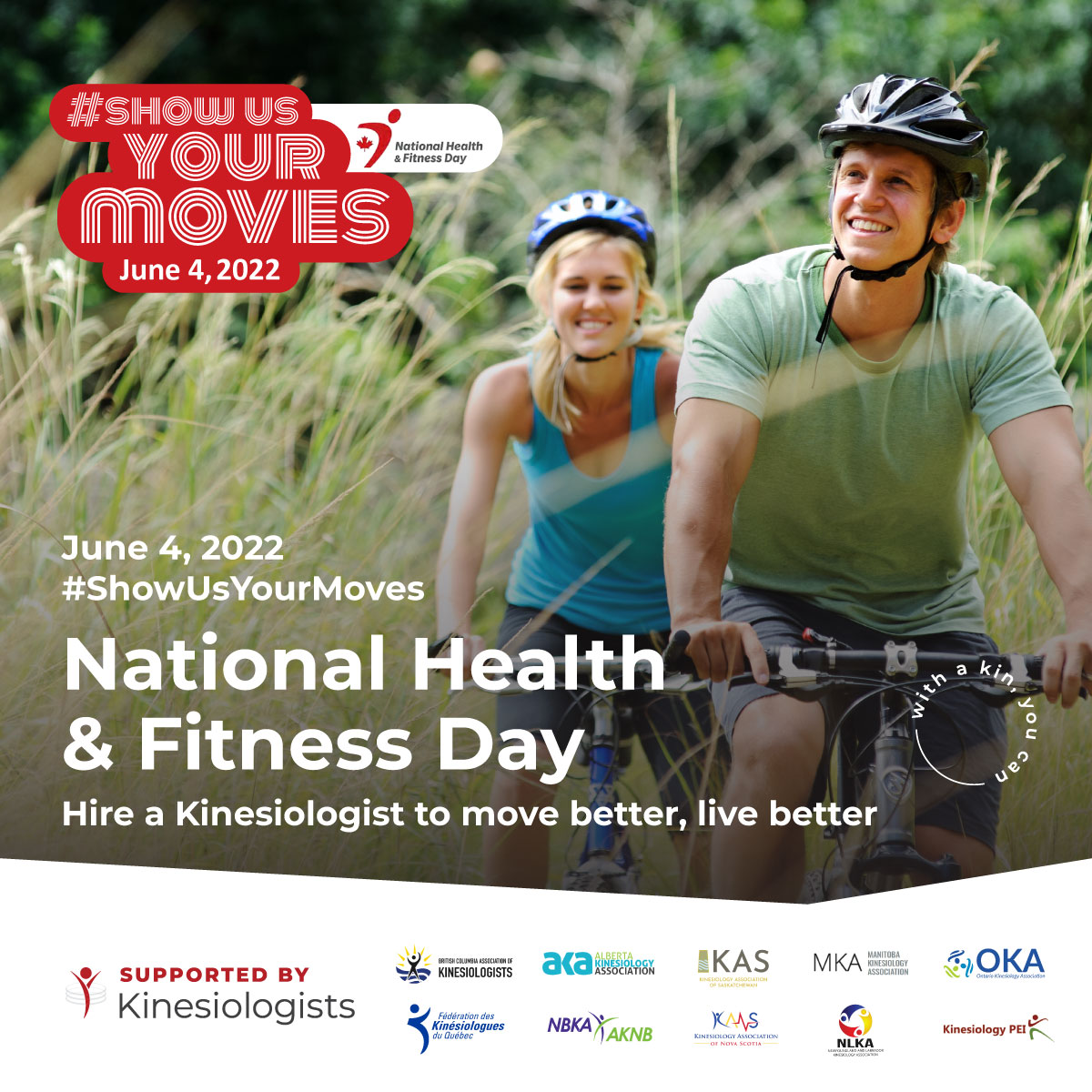
National Health and Fitness Day (NHFD)
1st Saturday in June (annually) - June 4 2022
Mental Health Events supported by Kinesiologists
2021  2020
2020 
2021  2020
2020 

Videos
THE PROFESSION OF KINESIOLOGY - BCAK
KINESIOLOGISTS HELPING PEOPLE LIVE BETTER LIVES - BCAK
KINESIOLOGY AS AN EXTENDED HEALTH BENEFIT - CKA / ACK - D. Darren MacDonald
TRENDY TRAINING METHODS - CKA / ACK - Jake Watson
CHRONIC DISEASE AND ILLNESS: THE IMPORTANT ROLE OF A KINESIOLOGIST - CKA / ACK - Kathie Sharkey
PREVENTING FALLS AND FRACTURES - CKA / ACK - Minda Chittenden
HOW TO PREVENT AND TO RECOVER FROM MUSCULOSKELETAL INJURIES - CKA / ACK - Kendra Thibodeau
FIND A KINESIOLOGIST IN PRIVATE PRACTICE - CKA / ACK - Kathlyn Mary Hossack
THE ROLE OF A KINESIOLOGIST AS AN EXPERT IN COURT - CKA / ACK - Hardip (Happy) Jhaj
SHOULD WEIGHT LOSS BE MY PRIMARY GOAL? - CKA / ACK - Des Martin
See other videos within the promotional material for events (above).
Resources, Forms, and Tools for Your Practice
The primary goal of these forms and documents is to give Kinesiologists samples to be used within their practice. The CKA is not responsible for consequences and damages that may occur as an outcome of their use or misuse, lack of completeness, or adaptation by Kinesiologists. It is to be stressed that the goal is to guide Kins, and if they have any questions about interpretation, they should seek independent legal advice.
EIMC Exercise Prescription Pad for MD (referrals)
Health Assessment Forms
2021 PAR-Q
Physical Activity Readiness Questionnaire - PAR-Q Fillable Version
Physical Activity Readiness Medical Examination - PARmed-X
Physical Activity Readiness Medical Examination - PARmed-X FOR PREGNANCY
Consent Form
Consent to Share Information Form - Medical Authorization
Functional Movement Screen - Score Sheet
Receipt Form
List of applicable taxes per province
Tax Information for Kinesiologists
Note: If you are incorporated, the following information does not apply.
Do I need a business number if I am self-employed or own my own business?
Not all businesses need a business number. However, you will need one if you:
- Register using Business Registration Online
- Register for any CRA program accounts (like GST/HST, payroll deductions, or import-export)
- Incorporate your business federally
- Register or incorporate your business in these provinces:
- British Columbia
- Manitoba
- Nova Scotia
- Ontario
- Saskatchewan
- New Brunswick
- Prince Edward Island
If you are from Quebec, you must proceed by registering with Revenue Québec.
For more information regarding starting your own business, visit here.
What is included in my income?
The Government of Canada defines business income as money you earn from a profession or trade, a manufacture or undertaking of any kind, an adventure or concern in the nature of trade, or any other activity you carry on for profit and there is evidence to support that intention.
For example, income from a service business is business income. Business income does not include employment income, such as wages or salaries received from an employer.
You must include all your income when you calculate it for tax purposes. If you fail to report all your income, you may have to pay a penalty of 10% of the amount you failed to report after your first omission.
What is the difference between GST and HST?
GST stands for Goods and Services Tax, while HST stands for Harmonized Sales Tax. The GST applies nationally. The HST includes the provincial portion of the sales tax but is administered by the Canada Revenue Agency (CRA) and is applied under the same legislation as the GST. The harmonized sales tax is a combination of federal and provincial taxes on goods and services in five Canadian provinces: New Brunswick, Newfoundland and Labrador, Nova Scotia, Ontario, and Prince Edward Island.
Click here to find out your province's GST/HST rate.
If you are from Quebec or have clients in Quebec, you must apply the PST (9.975%) and GST (5%).
If you have clients in a province other than the one you are registered in, then you must apply the taxes of the client’s province. If you are not registered to collect their provincial taxes, you do not have to apply it (e.g., if you are in Ontario and your client is in Quebec, you must apply only the 5% GST). In a province with HST, you must apply all taxes (e.g., 13% if you are in Nova Scotia and your client is in Ontario).
How does goods and services tax (GST) work when I am self-employed?
If you do not earn more than $30,000 per year in revenue your business is considered a “small supplier” and you do not need to charge your clients for GST/HST.
If you make more than $30,000 per year in revenue, you are required to charge your clients for GST/HST.
Note: If you supply digital services to Canadian customers, you are required to charge GST/HST.
For more information regarding GST/HST click here.
Disclosure: The information made available through this website may differ from one province to another. The primary purpose of this website is to provide Kinesiologists with information, resources, tools, materials, definitions, job titles, scope of practice, etc. Because kinesiology is provincially legislated, all these may be different from one province to another. The CKA / ACK is not responsible for consequences and damages that may occur as an outcome of the use, misuse, or misinterpretation of this information by anyone. It is to be stressed that the goal is to guide Kins, and if anyone has difficulty with interpretation, they should seek independent advice.
Articles, abstracts, etc.
Kinesiologist is a profession recognized under the National Occupational Classification (NOC) issued by Statistics Canada: 3144 - Other professional occupations in therapy and assessment
What Kinesiologists Need to Know About Kinesiology Tape
Effects of Task Difficulty on Kinematics and Task Performance during Walking Workstation Use
Strength and Hypertrophy Adaptations Between Low- Vs. High-Load Resistance Training
A Review of the Acute Effects and Long-Term Adaptations of Single- and Multi-Joint Exercises during Resistance Training
Developing a Research Agenda for the Profession of Kinesiology: A Modified Delphi Study
HIIT, BOOTCAMPS, TRX®. What Are These New Trendy Training Methods?
Is Post-Exercise Muscle Soreness a Valid Indicator of Muscular Adaptations?
Differences in Collaboration: Physiotherapist and Kinesiologist
Demystifying the difference: Physio vs. Kin
Star-up – Where to Begin Suggesting Lean Canvas
True Science of Movement
Why Is Trauma Relevant in Practice? An Aid for Kins
Weight Training: Is It for Everyone
How Kinesiologists Help People with Chronic Disease and Illness
Practicing Kinesiology in My Own Private Practice – How Do I Get Started
Differences between CKA - ACK, CSEP and CATA
Effectiveness of Workplace Interventions in Return-to-Work for Musculoskeletal, Pain-Related and Mental Health Conditions: An Update of the Evidence and Messages for Practitioners
Physical Fitness Tied to a Nearly 90% Reduction in Dementia Risk
Wearing of Cloth or Disposable Surgical Face Masks Has No Effect on Vigorous Exercise Performance in Healthy Individuals. Keely Shaw, Scotty Butcher, Jongbum Ko, Gordon A. Zello, and Philip D. Chilibeck. International Journal of Environmental Research and Public Health, November 3, 2020. Read More
Return to Training in the COVID-19 Era: The Physiological Effects of Face Masks during Exercise. Danny Epstein, Alexander Korytny, Yoni Isenberg, et al. Scandinavian Journal of Medicine and Science in Sports, https://doi.org/10.1111/sms.13832. Read More
Applying Clinical Reasoning Theories to Kinesiology: Advancing the Education of Future Healthcare Professionals. Rebecca Ataman and Robyn J. Ibeyb. International Journal of Kinesiology in Higher Education, https://doi.org/10.1080/24711616.2021.1881418. Read More
Design and Validity of a Choice-Modeling Questionnaire to Analyze the Feasibility of Implementing Physical Activity on Prescription at Primary Health-Care Settings. Sergio Calonge-Pascual, Francisco Fuentes-Jiménez, José A. Casajús Mallén, and Marcela González-Gross. International Journal of Environmental Research and Public Health, September 11, 2020. Read More
The Effects of Light Touch on Gait and Dynamic Balance during Normal and Tandem Walking in Individuals with an Incomplete Spinal Cord Injury. Alison R, Oates, Tarun Arora, Joel L. Lanovaz, and Kristin E. Musselman. Spinal Cord, July 2020. Read More
Stretching Is Superior to Brisk Walking for Reducing Blood Pressure in People with High-Normal Blood Pressure or Stage I Hypertension. Jongbum Ko, Dalton Deprez, Keely Shaw, Jane Alcorn, Thomas Hadjistavropoulos, Corey Tomczak, Heather Foulds, and Philip D. Chilibeck. Journal of Physical Activity and Health, January 1, 2021. Read More
The Effect of Physical Exercise on Functional Brain Network Connectivity in Older Adults with and without Cognitive Impairment: A Systematic Review. Frederico Pieruccini-Faria, Timothy J. Doherty, and Manuel Montero-Odasso. Mechanisms of Ageing and Development, June 2021. Read More
The Efficacy of Exergaming in People with Major Neurocognitive Disorder Residing in Long-Term Care Facilities: A Pilot Randomized Controlled Trial. Nathalie Swinnen, Mathieu Vandenbulcke, Eling D. de Bruin, Riekje Akkerman, Brendon Stubbs, Joseph Firth, and Davy Vancampfort. Alzheimer's Research & Therapy, March 2021. Read More
Assessment of Postural Stability during an Upper Extremity Rapid, Bimanual Motor Task After Sport-Related Concussion. Cameron S. Mang, Tara A. Whitten, Madeline S. Cosh, Sean P. Dukelow, and Brian W. Benson. Journal of Athletic Training, October 16, 2020. Read More
Impact of Activity Monitoring on Physical Activity, Sedentary Behavior, and Body Weight during the COVID-19 Pandemic. Jacob E. Barkley, Gregory Farnell, Brianna Boyko, Brooke Turner, and Ryan Wiet. International Journal of Environmental Research and Public Health, July 15, 2021. Read More
The Influence of an Acute Bout of Moderate-Intensity Cycling Exercise on Sensorimotor Integration. Katlyn E. Brown, Jason L. Neva, Cameron S. Mang, Briana Chau, Larissa K. Chiu, Beatrice A. Francisco, William R. Staines, and Lara A. Boyd. European Journal of Neuroscience, July 21, 2020. Read More
Physical Fitness and Exercise during the COVID-19 Pandemic: A Qualitative Enquiry. Harleen Kaur, Tushar Singh, Yogesh Kumar Arya, and Shalini Mittal. Frontiers in Psychology, October 29, 2020. Read More
Long-Lasting Healthy Changes: Doable and Worthwhile. Monique Tello, MD, MPH. Harvard Health Publishing, September 14, 2021. Read More
Take Control of Your Knee Pain. Kelly Bilodeau. Harvard Women's Health Watch, September 1, 2021. Read More
Physical Activity Prescription: A Critical Opportunity to Address a Modifiable Risk Factor for the Prevention and Management of Chronic Disease: A Position Statement by the Canadian Academy of Sport and Exercise Medicine. Jane S. Thornton, Pierre Frémont, Karim Khan, Paul Poirier, Jonathon Fowles, Greg D. Wells, and Renata J. Frankovich. BMJ Sports Medicine, September 2016. Read More
Physical Inactivity Is Associated with a Higher Risk for Severe COVID-19 Outcomes: A Study in 48 440 Adult Patients. Robert Sallis, Deborah Rohm Young, Sara Y. Tartof, James F. Sallis, Jeevan Sall, Qiaowu Li, Gary N Smith, and Deborah A. Cohen. BMJ Sports Medicine, October 2021. Read More
Associations of Muscle Mass and Strength with All-Cause Mortality among US Older Adults. Ran Li, Jin Xia, X.I. Zhang, Wambui Grace Gathirua-Mwangi, Jianjun Guo, Yufeng Li, Steve McKenzie, and Yiquing Song. Medicine and Science in Sports and Exercise, March 2018. Read Results and Conclusion
Does Strength-Promoting Exercise Confer Unique Health Benefits? Emmanuel Stamatakis, I-Min Lee, Jason Bennie, Jonathan Freeston, Mark Hamer, Gary O'Donovan, Ding Ding, Adrian Bauman, and Yorgi Mavros. American Journal of Epidemiology, May 2018. Read More
Amount and Intensity of Leisure-Time Physical Activity and Lower Cancer Risk. Charles E. Matthews, Steven C. Moore, Hannah Arem, Michael B. Cook, Britton Trabert, and Niclas Håkansson. Journal of Clinical Oncology, March 2021. Read Results and Conclusion
Got Arthritis? Keep Moving. Caitlin Dow. Nutrition Action, July 4, 2018. Read More
How Can Exercise Training Benefit Older Adults? An excerpt from Practical Guide to Exercise Physiology, second edition, by Robert Murray and W. Larry Kenney. Read More
Inactive individuals need to engage in physical activity to improve well-being. Reference: The Impact of COVID-19 on Physical Activity, Behavior and Well-Being of Canadians. Iris A. Lesser and Carl P. Nienhuis. International Journal of Environmental Research and Public Health, May 31, 2020. Read More
Physical activity is particularly important during this time for older adults to maintain a level of independence. Reference: Impact of Home Quarantine on Physical Activity Among Older Adults Living at Home During the COVID-19 Pandemic: Qualitative Interview Study. Luc Goethals, Nathalie Barth, Jessica Guyot, David Hupin, Thomas Celarier, and Bienvenu Bongue. JMIR Aging, May 7, 2020. Read More
Social isolation can alter physical activity as well as eating behaviours. Reference: Effects of COVID-19 Home Confinement on Eating Behaviour and Physical Activity: Results of the ECLB-COVID19 International Online Survey. Achraf Ammar, Michael Brach, Khaled Trabelsi, et al. Nutrients, 2020, doi:10.3390/nu12061583. Read More
SFU Lab Helps Patient Manage Rare Disease through Programmed Exercise. Diane Mar-Nicolle. SFU News, May 20, 2020. Read More
How Fitness Will Change Forever. Michael Owen, The Atlantic, May 29, 2020. Read More
2019 American College of Rheumatology/Arthritis Foundation Guideline for the Management of Osteoarthritis of the Hand, Hip, and Knee. Sharon L. Kolasinski, et al. Arthritis Care & Research. 2020. Read More
Gaining Skeletal Muscle Strength by Exercising. An excerpt from Exercise and Physical Activity for Older Adults by Danielle R. Bouchard. Martin Sénéchal and Brittany Rioux. Read More
Stand When You Can: Development and Pilot Testing of an Intervention to Reduce Sedentary Time in Assisted Living. M.L. Voss, J.P. Pope, R. Larouche, and J.L. Copeland. BMC Geriatrics, August 2020. Read More
24-Hour Movement Guideline for Adults – Launch, CSEP. Read More
Staying Active During the Coronavirus Pandemic. ACSM and EIMC. Access the Document

.png) FIND A KIN
FIND A KIN
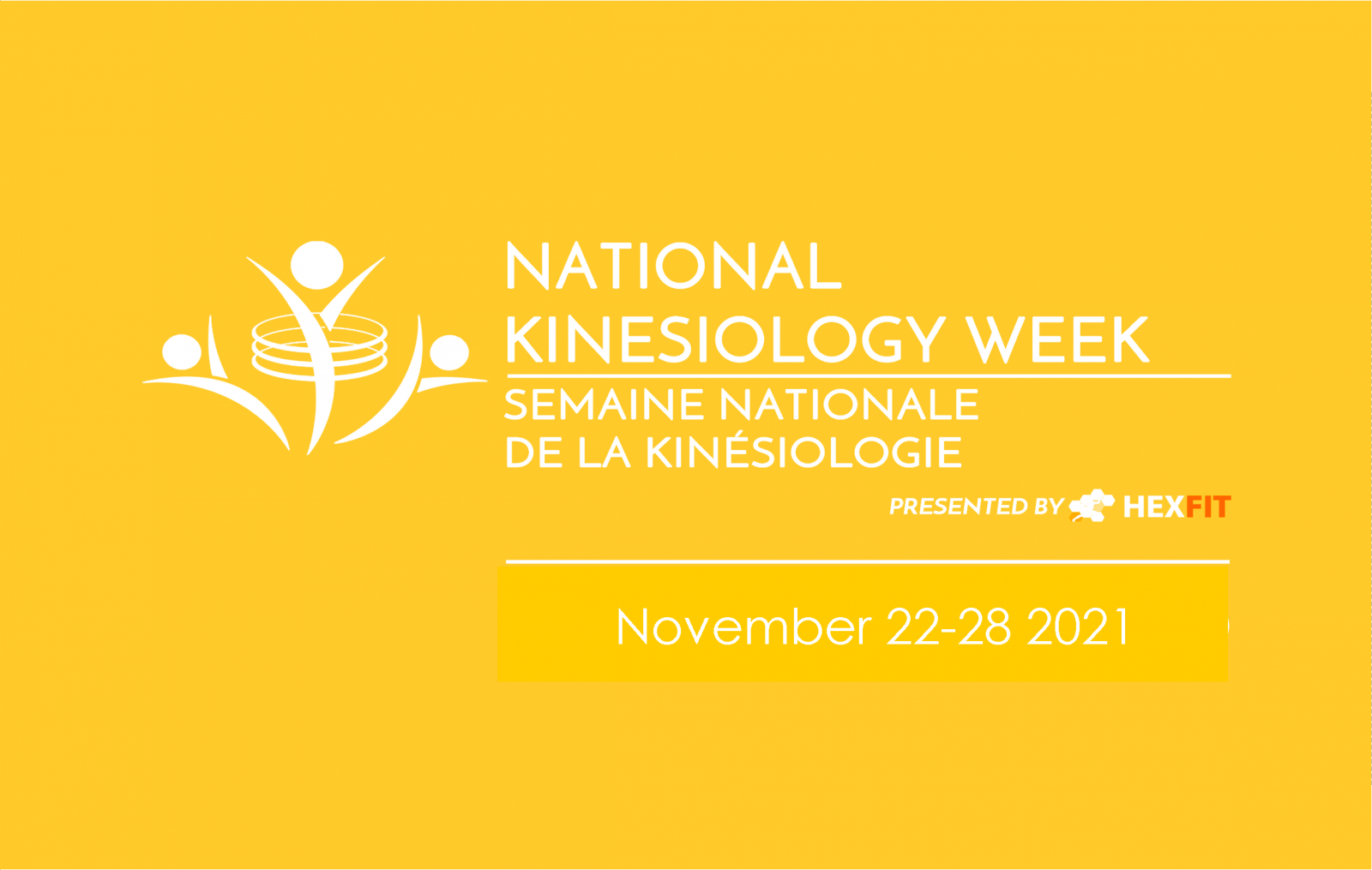 2020
2020 
